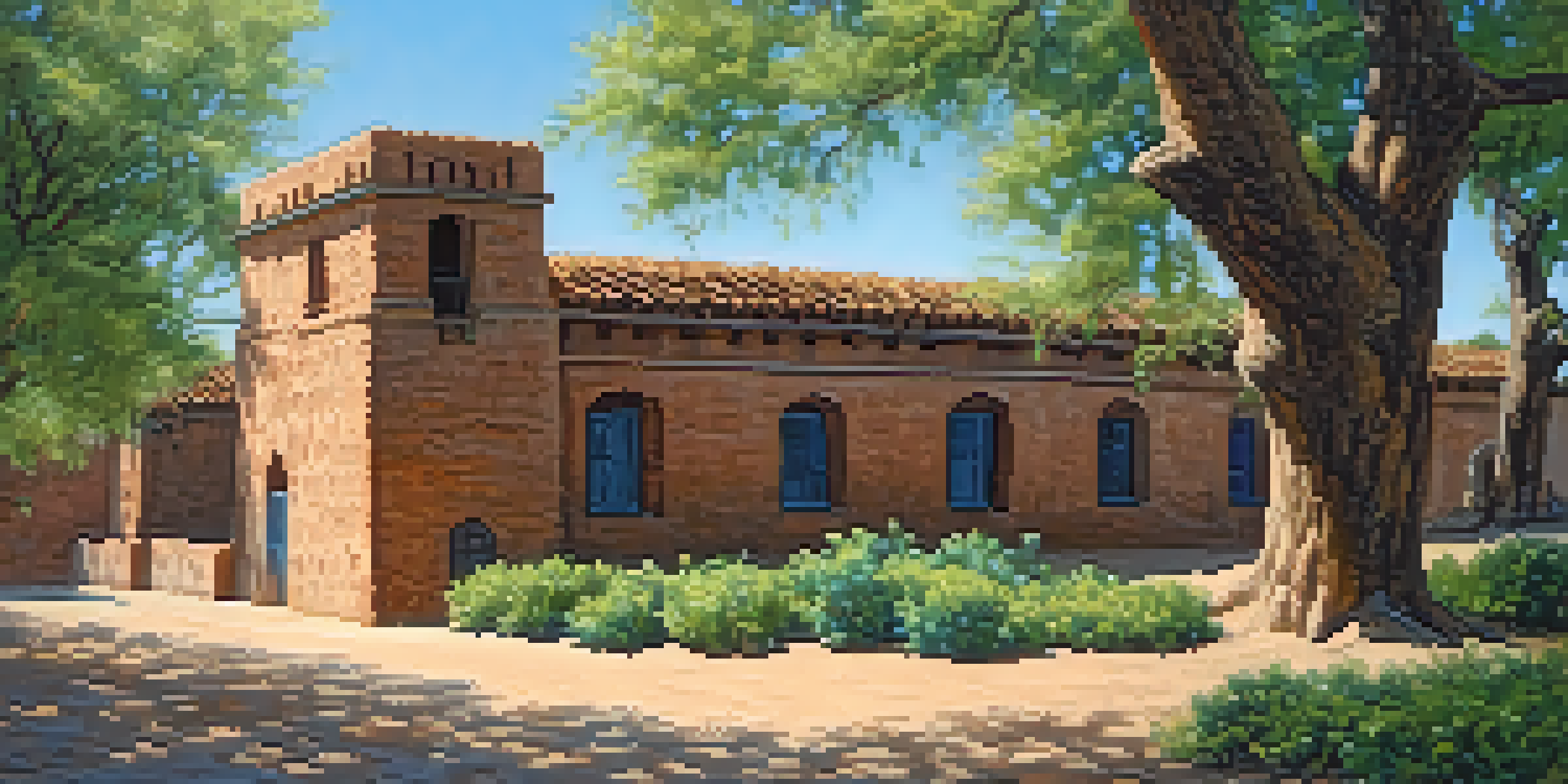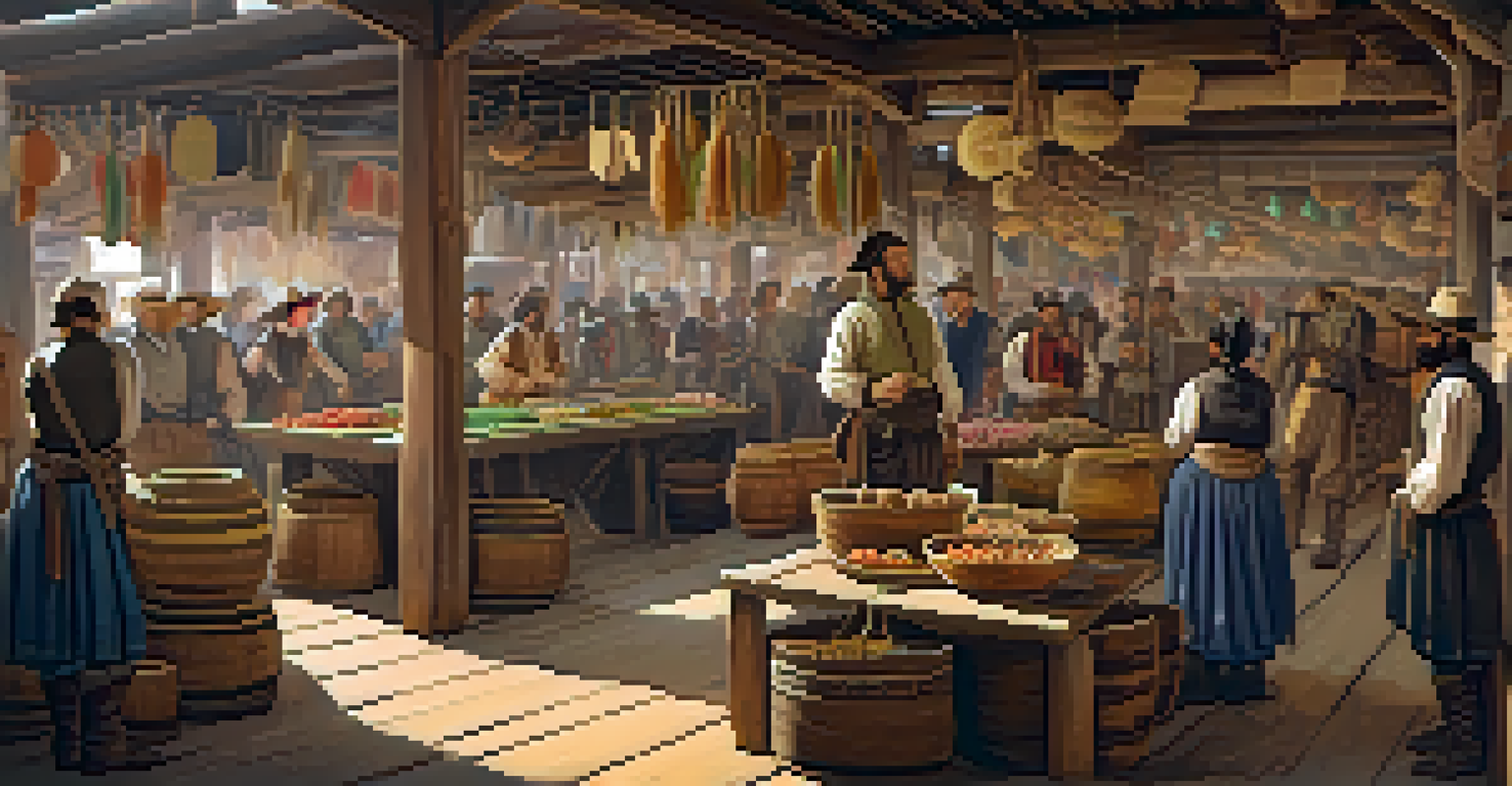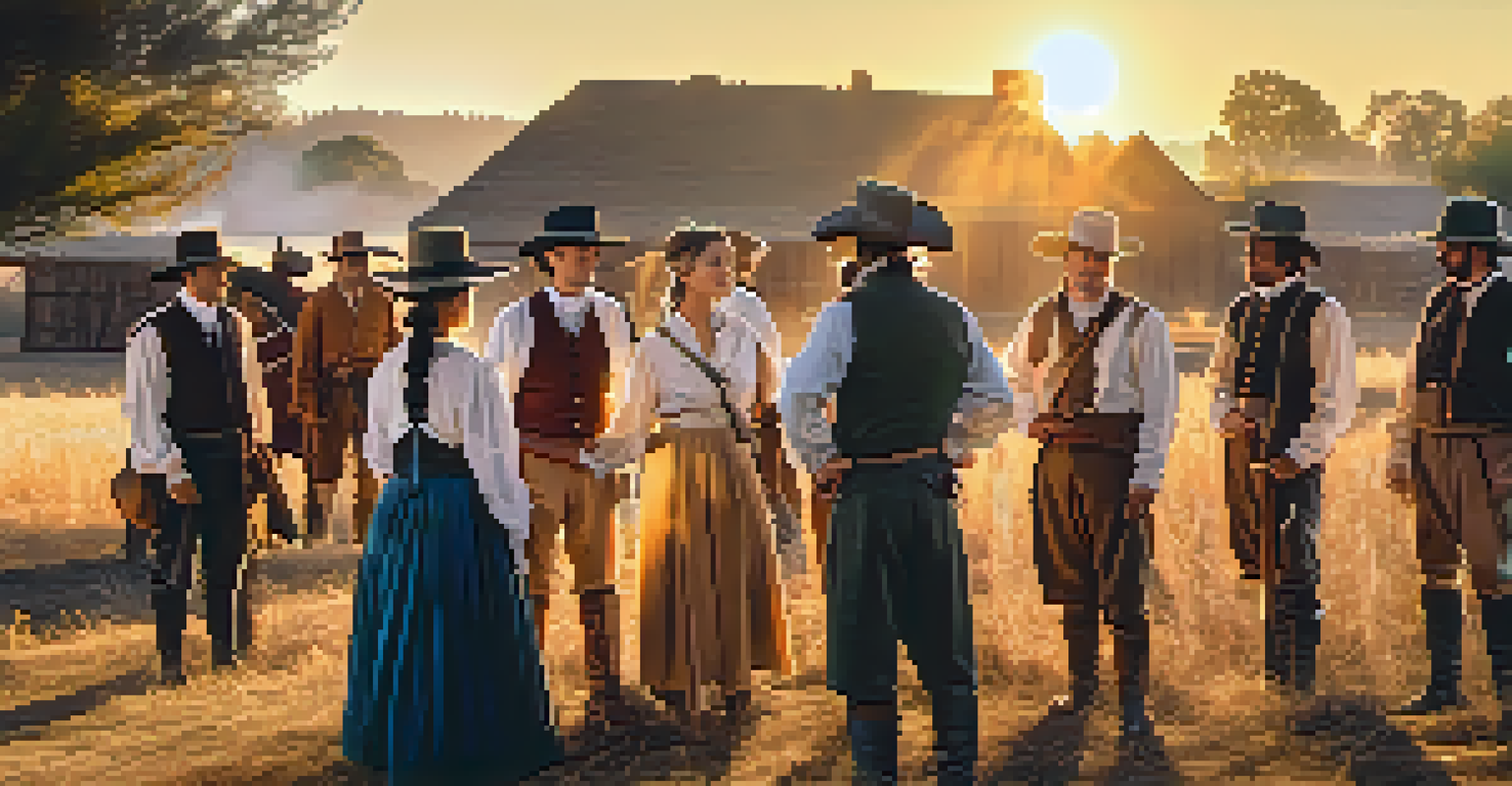Sutter's Fort: The Birthplace of Sacramento's History

The Historical Significance of Sutter's Fort
Sutter's Fort, established in 1839 by John Sutter, is a pivotal site in Sacramento's history. It served as a trading post and agricultural hub, attracting settlers and traders from various backgrounds. This fort not only represented the dreams of expansion but also became a melting pot of cultures, laying the groundwork for modern Sacramento.
The history of the world is but the biography of great men.
As the first non-Native settlement in the region, Sutter's Fort played a crucial role during the California Gold Rush. The influx of gold seekers transformed it into a bustling center of commerce and communication. This period marked a significant shift in the area's demographics and economy, showcasing the fort's importance in shaping the city’s trajectory.
Today, Sutter's Fort stands as a historical monument, allowing visitors to step back in time and appreciate its role in California's development. The site is a testament to resilience and ambition, embodying the spirit of those who sought new opportunities in the West.
John Sutter: The Visionary Behind the Fort
John Sutter, a Swiss immigrant, envisioned Sutter's Fort as a prosperous agricultural enterprise. His ambition was fueled by the promise of the American frontier, where he hoped to create a thriving community. Sutter's vision extended beyond mere survival; he sought to cultivate a legacy that would endure.

Despite his efforts, Sutter faced numerous challenges, from conflicts with Native American tribes to the overwhelming influx of settlers. These hurdles tested his resolve and adaptability, yet he remained committed to his dream. His story illustrates the complexities of ambition in an evolving landscape filled with opportunities and obstacles.
Sutter's Fort: A Cultural Melting Pot
Sutter's Fort served as a dynamic hub where Native Americans, European settlers, and immigrants interacted, creating a rich tapestry of shared traditions and experiences.
Sutter's legacy is intricately tied to the fort itself, which became a symbol of his aspirations and the broader narrative of westward expansion. While he encountered setbacks, his role as a pioneer remains an essential chapter in Sacramento's history.
The Architecture and Layout of Sutter's Fort
The architectural design of Sutter's Fort reflects the needs of a bustling trade post in the 19th century. Built with adobe bricks, the fort was designed to withstand both natural elements and potential threats. Its sturdy walls and strategic layout provided a sense of security for those who sought refuge within its confines.
History is not a burden on the memory but an illumination of the soul.
Inside, the fort featured various structures, including living quarters, workshops, and storage facilities. This arrangement facilitated daily activities, from trade to farming, creating a microcosm of early Sacramento life. Walking through the fort today, visitors can visualize the vibrant community that once thrived in this space.
Sutter's Fort also serves as a historical artifact, showcasing the architectural styles and construction methods of the time. Its preservation allows us to appreciate not only the fort's functionality but also the artistry involved in its creation, reminding us of the labor and love that shaped it.
Interactions Between Cultures at Sutter's Fort
Sutter's Fort was a melting pot of diverse cultures, bringing together Native Americans, European settlers, and immigrants from various backgrounds. These interactions created a dynamic environment rich in traditions and shared experiences. The fort became a place where different ways of life intersected, influencing the development of the region.
Trade and cooperation were essential components of life at the fort. Sutter engaged with local Native American tribes, learning from their knowledge of the land while also introducing them to new agricultural practices. These exchanges fostered a sense of community, albeit within a complex historical context that included tensions and misunderstandings.
Key Role in the Gold Rush Era
During the California Gold Rush, Sutter's Fort transformed into a bustling supply center for fortune seekers, significantly impacting Sacramento's landscape and economy.
As Sacramento grew, the cultural tapestry woven at Sutter's Fort laid the foundation for the city's identity. This blend of influences can still be seen today, as Sacramento celebrates its multicultural heritage through festivals, cuisine, and art.
The Role of Sutter's Fort in the Gold Rush
When gold was discovered in California in 1848, Sutter's Fort transformed into a bustling hub for fortune seekers. The fort served as a supply center where miners could rest, gather supplies, and share stories of their adventures. This sudden influx of people dramatically altered the landscape of Sacramento and emphasized the fort's strategic importance.
As the Gold Rush progressed, Sutter's Fort became overwhelmed by the sheer number of prospectors. While it initially promised prosperity for Sutter, the chaos also led to his financial ruin. This paradox highlights the unpredictable nature of the Gold Rush and its impact on those who sought to benefit from it.
Today, the fort stands as a reminder of this transformative period in history. Visitors can learn about the challenges and triumphs faced by those who flocked to the area, as well as the fort's role in facilitating their journeys toward wealth and opportunity.
Preservation and Restoration of Sutter's Fort
Recognizing its historical significance, efforts to preserve and restore Sutter's Fort began in the 20th century. The California State Parks system took the lead in maintaining the site, ensuring that future generations can appreciate its rich heritage. This commitment to preservation reflects a broader understanding of the importance of safeguarding history.
Restoration projects have focused on accurately recreating the fort's original structures and layout, allowing visitors to experience the fort as it once was. Such initiatives not only honor the past but also educate the public about the complexities of Sacramento's history. Each brick and beam tells a story of resilience and adaptability.
Preservation Efforts for Future Generations
Ongoing restoration and preservation of Sutter's Fort ensure that its historical significance is maintained, allowing future visitors to connect with the past.
Visiting Sutter's Fort today offers a unique glimpse into the region's past. The ongoing preservation efforts ensure that the fort remains a vital part of Sacramento's cultural landscape, inviting curiosity and exploration.
Visiting Sutter's Fort: A Journey Through History
For anyone interested in history, a visit to Sutter's Fort is a must. The fort is open to the public, offering guided tours and educational programs that bring its rich history to life. Visitors can explore the grounds, participate in hands-on activities, and engage with knowledgeable staff who share fascinating stories.
The fort also hosts various events throughout the year, including reenactments and festivals that celebrate Sacramento's cultural heritage. These events provide an immersive experience, allowing guests to step into the shoes of those who lived at the fort during its heyday. It's a chance to connect with the past in a vibrant and dynamic way.

Whether you're a history buff or simply looking for a unique outing, Sutter's Fort offers something for everyone. Its significance in shaping Sacramento's identity makes it a captivating destination that encourages reflection and appreciation of the journey that led to the city's formation.